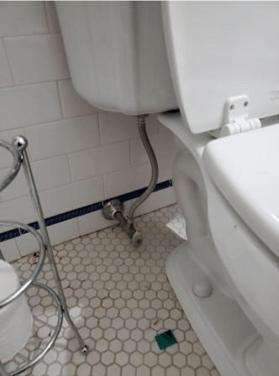Preventing Water Damage in the Bathroom
Preventing Water Damage in the Bathroom
Blog Article
What're your beliefs about How to Prevent Bathroom Water Damage?

The bathroom is extremely prone for damp accumulation and possible water damages because of the constant use water in it. This short article offers straightforward assessment techniques to help identifying water damage hazards.
The constant use of water in the bathroom makes it exceptionally susceptible for moist buildup as well as potential water damages. By examining it regularly, you can lower water associated damages.
The adhering to set of examinations is simple to execute as well as should be done as soon as in every three months in order to maintain your restroom in good shape and also to avoid prospective water damages brought on by the tub, the shower, pipe joints and also plumbing, sinks, cupboards, and the commode
Do not overlook performing these assessments as well as be thorough while executing them. Bear in mind that these simple evaluations can save you a great deal of money by giving early signs for water damage
Bathtub as well as Shower
The shower and bath tub require unique attention and also maintenance. Examine the ceramic tiles and also replace if cracked. Make certain that there is no missing cement in between the tiles. Evaluate and change cracked caulking at joints where the wall surfaces meet the flooring or the bathtub. Blocked drains pipes as well as pipelines problems will certainly prevent the tub from drying as well as might indicate significant problems underneath the bathtub. Talk to a specialist instantly to stop structural damage. Take notice of discolorations or soft areas around the bath tub walls as they may show an internal leak.
Plumbing
Signs for water damages are tough to spot given that most pipes are set up inside the wall surfaces.
Pay unique focus to flooring and walls wetness and also discolorations as they might indicate an unnoticeable plumbing issue. Examine dampness degrees in adjoining rooms as well.
Sinks as well as Cabinets
Sinks as well as cupboards are revealed to dampness and also moisture daily and are frequently overlooked. Inspect routinely under the sink as well as on the counter top over it. Fix any kind of drip in the trap as it may suggest drain issues. Check out the sink, slow-moving draining pipes might show an obstructed drainpipe. Change sink seals if they are fractured or loosened.
The Commode
The commode is an at risk water joint. Inspect the water lines as well as search for leaks around the bathroom seat, in the tube, and also under the water container. If you detect any signs of moisture on the floor around the toilet, check for leaks in the toilet rim and tank seals.
Understand that hanging toilet dish antiperspirants increases the chances for clogs.
Water Damage Signs In The Bathroom To Avoid Cleanup
Musty smell
This is one of the easiest signs to catch because musty smells are so odorous. The damp, earthy, moldy smell should be a big red flag. The smell will develop when moisture gets trapped in surfaces, and begins to facilitate mold growth. Leaking pipes under cabinets, inside walls, and behind shower fixtures will cause moisture to stay trapped and not dry, which will lead to mold growth and spread. As soon as you notice any musty smells in your bathroom, have it checked for hidden water damage and cleanup signs.
Visible mold
If the smell isn’t there to give it away, sometimes you will actually see mold growth. Finding mold in your bathroom is a serious problem, because mold is very harmful to your health. By the time mold growth is visible, it also means that water damage has already occurred and been present for some time. The only way the mold problem can be resolved is to find the source of the moisture and get it stopped. To safely and adequately remove mold, you need to have professionals handle the remediation. Do not waste any time in getting mold problems addressed, fixed, and sanitized so that you can protect you and your family from the many respiratory symptoms caused by mold exposure.
Damaged floors
Bathroom floors should be able to withstand some exposure to water while still remaining in good condition. However, when excess exposure or water leaks occur, they will begin to damage even the most water-resistant flooring. If you notice any cracking, bubbling, staining, or warping on your bathroom floors, there is probably a water leak somewhere causing the distortion. If you notice areas of the floor have become softer, or even have a spongy feeling, there is probably damage to the subfloor. Subflooring is typically made up of plywood. When plywood is exposed to water or moisture, it will absorb it. Once it has become saturated, the weight of the excess water will cause the wood to swell and soften. Check the floors in your bathroom frequently to catch any of these sings before they lead to damaged subflooring.
Changes on walls
When water leaks behind walls, it will cause changes in the drywall. Peeling plaster, blistering paint, and soggy wallpaper are all good indicators that excess water is building up behind the wall. Water leaking behind drywall will cause it to swell and be soft to the tough. If you start to notice gaps along the trim of your walls, or where tile meets the wall, it could also be a strong indicator that there is a leak behind the wall. Any changes, distortion, or damage on the walls should be evaluated as soon as you notice it to prevent further water damage and cleanup.

I'm very interested by How to Fix a Water Damage Bathroom and I am hoping you liked the new blog entry. Do you know anybody else who is enthusiastic about How to Fix a Water Damage Bathroom? Feel free to share it. Many thanks for your time invested reading it.
Visit Page Report this page